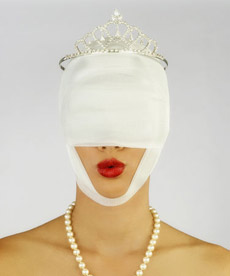Cosmetic Surgery is Not Just for Women
| June 17, 2009 06:42:29 PM |
 Whether patients come to plastic surgeons for a new look or a restoration to their old selves, they cite similar reasons for seeking the surgery. "Basically, people say they want to look 'normal,' " says Dr. Sharon Romm, a plastic surgeon at Georgetown University Hospital in Washington, D.C. "They don't want to stand out in a crowd because of their nose or a scar."
Whether patients come to plastic surgeons for a new look or a restoration to their old selves, they cite similar reasons for seeking the surgery. "Basically, people say they want to look 'normal,' " says Dr. Sharon Romm, a plastic surgeon at Georgetown University Hospital in Washington, D.C. "They don't want to stand out in a crowd because of their nose or a scar."
A typical female patient considering surgery, says Dr John Cohn, a plastic surgeon at the University of Southern California Medical Center in Los Angeles, "will say something like, 'I feel like a young and vital person on the inside but when I look in the mirror, I see someone older. I'd like the outside me to match the way I feel inside.'
Men say they don't want to look dissipated. They cite careers as motivation for surgery: the need to look young to compete with younger men and women."
The reasons for plastic surgery may stay the same but the surgical techniques have changed dramatically over the centuries. The first written evidence of reconstructive surgery to replace a missing nose — is found in a collection of teachings from India, written about 600 B.C. Centuries later, in Rome, Celsus (25 B.C. to A.D. 50) wrote of techniques used to repair defects in the face using nearby tissue.
The Koomas, an Indian caste of potters, take credit for popularizing nasal reconstructions for victims of such diseases as syphilis and leprosy and for women whose noses were cut off as punishment for adultery. Word of the "Indian Method," which involved forming a nose with a flap of skin from the forehead, traveled to England in the late 1700s and to America in the early 1800s.
Modern reconstructive surgery, however, began after World War II when, with the help of improved anesthesia, doctors devised ingenious ways to rehabilitate disfigured soldiers and civilians. Many of the skills and techniques perfected during those wartime years were used later in cosmetic surgery.
For years, cosmetic surgery was the domain of movie stars and the very wealthy. Nowadays, however, some middle income people can afford the surgery, though the techniques bear little resemblance to those of even a decade ago. Today, for example, doctors use flaps to cover deep wounds or defects. This chunk of skin with its muscle, blood vessels and nerves intact that is transplanted to the damaged area during surgery.
Microsurgery, while not solely the province of plastic surgeons, has been used extensively by them to replant severed limbs, scalps, fingers and toes. In microsurgery, the doctor looks through a high-power microscope to sew together tiny blood vessels, often using suture needles one-third the width of a human hair.
Lasers, specifically the blue-green argon laser, can treat skin defects such as port-wine stains, formed by an extra layer of red blood vessels near the skin's surface. The surgeon shines the laser on the stain which absorbs the blue light, creating heat. The heat destroys the extra blood vessels, and the stain lightens or disappears.
Tissue expanders, another important innovation, introduced in the mid-1970s, allows plastic surgeons to create new skin near the area to be covered. A small plastic bag is inserted beneath the patient's skin and inflated with a saline solution to create more surface area. Skin then grows around the enlarged area, giving the surgeon more tissue to transplant to the affected area.
The beauty of this procedure, which occasionally replaces traditional skin grafting, is that surgeons work with skin that matches that of the affected area. So, tissue expanders now allow surgeons to grow a specific kind of skin, such as finely textured facial skin, instead of grafting tissue from another part of the body.